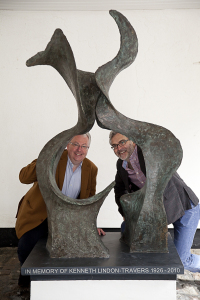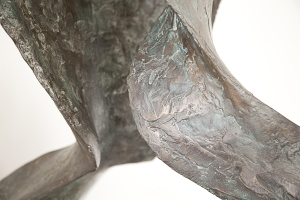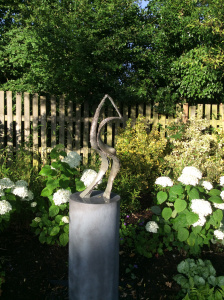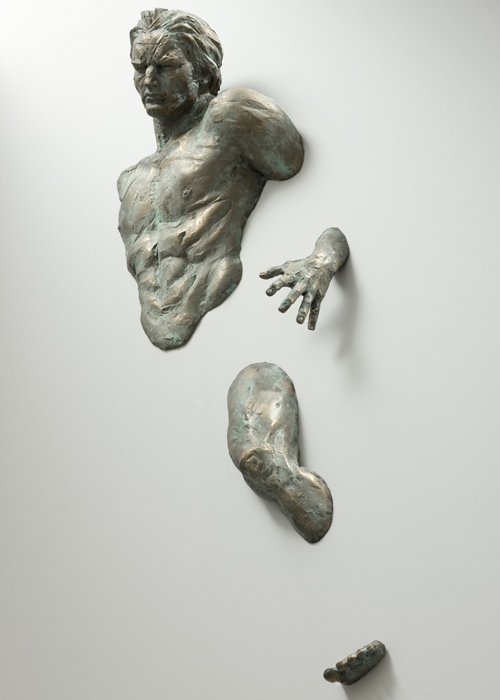I’m not a fan of the Huffington Post but they post on such a wide range of topics, invariably I end up reading some of their work. Lately, I have seen a few news items about Thea Alvin and the stone sculpture-landscape she is installing at Duke. You have got to give the Huff some credit, they are the ones that made the editorial decision to focus their reporting of this event on the tension between the craft of stonemasonry and the art of sculpture.

The item has a succinct quote from Hellen Diaz and Mike de Palma, of New Castle Stoneworks:
“Stonemasonry is one of the earliest crafts in civilization’s history. … Stone installation is an intricate art; the mental aptitude it requires to endure a project for two or three years and turn simple stone into a beautiful and truly unique piece of art is enormous.”
Mr. Chameides’ post starts off with some links on stonemasonry and the craft vs. art debate. I’d like to highlight a couple of quotes from the related material he points to.
From the ART TIMES, Sept/ Oct 2009; By Donald Windsor:
Art is craft that leaps into a metaphor. True art evokes meanings and emotions far beyond what the viewers observe. Craft remains the underlying basis of art, but no matter how well done, is merely what it looks like.
From the Tate blog, 13 October 2011; By Kirstie Beaven:
Perhaps intention makes the distinction. If a maker intends to express something perhaps that makes it art.
However, I asked a few makers at a contemporary craft fair last week, and they often felt that it was the material they worked with that made it craft – textiles, ceramics, glass seem to fall into the craft category, never mind if their intention as maker might be an artistic one.
Perhaps it’s how a maker learnt their skill. As an apprentice coming through a process of learning a skill, hand to hand, as it were? That’s craft. As a fully formed genius honing an expressive talent? That’s art.
Perhaps it’s use. Something wearable or useable – jewellery or furniture for example – seems to fit neatly under the craft label, while something that has no clear practical purpose might be called art. However, this doesn’t take into account the decorative crafts, nor the artists who produce practical items.
As for Mrs. Alvin – from what I’ve seen her specialty is dry-laid stone arches. Mr. Chameides describes her work this way:
This extraordinary woman uses her bare hands and a whole lot of muscle and creative energy to build amazing rock structures that curl and twist, undulate in ways that delight and amaze and challenge.

Here’s Mrs. Alvin’s take on the art in stonemasonry:
But to Alvin, respecting the craft alone “does not make art.” To make art as a stonemason, she says, you must “speak to the stone … see the beauty in the stone.” She clearly sees it as a mystical experience to create a structure that is “perfect in its expression of imperfection.”
Source: http://www.huffingtonpost.com/bill-chameides/stonemasonry-environmenta_b_4869604.html
Thea Alvin’s web site: http://www.myearthwork.com/thea-alvin/
 I do love it when someone enjoys my work enough to want to invest in it at a gallery or exhibition – it gives you a kind of affirmation I guess; but for me there is no greater joy than being commissioned to undertake a bespoke sculpture. The client will have seen my work and feel inspired enough to want to have one of my sculptures made specifically for them and usually situated in a particular place.
I do love it when someone enjoys my work enough to want to invest in it at a gallery or exhibition – it gives you a kind of affirmation I guess; but for me there is no greater joy than being commissioned to undertake a bespoke sculpture. The client will have seen my work and feel inspired enough to want to have one of my sculptures made specifically for them and usually situated in a particular place.
 I always go into a new commission with an open mind and look to respond to the site specifically and also to draw upon the tastes and aspirations of my client – what style is their home, what artists do they admire and what do they have on their…
I always go into a new commission with an open mind and look to respond to the site specifically and also to draw upon the tastes and aspirations of my client – what style is their home, what artists do they admire and what do they have on their…

































